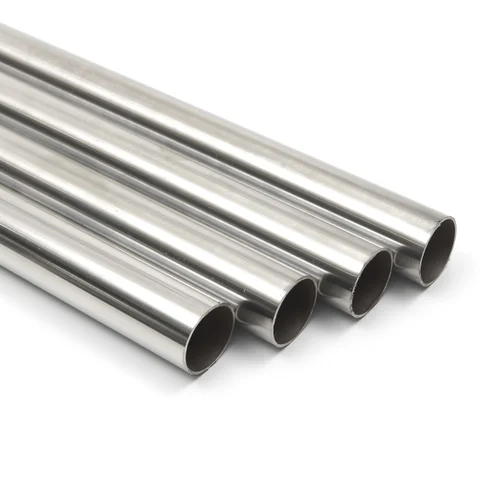Factors Influencing SS Pipe Price in 2024
Analyzing SS Pipe Price Trends in 2024
Stainless steel (SS) pipes remain vital in construction, manufacturing, and various industrial sectors. Known for their durability and resistance to corrosion, these pipes are a preferred choice for many applications. However, SS pipe prices are influenced by multiple factors, from material costs to global demand. In this blog, we’ll dive deep into the factors shaping SS pipe prices in 2024 and provide actionable insights for businesses and buyers.
Key Factors Impacting SS Pipe Price
- Cost of Raw Materials
Stainless steel is primarily composed of iron, chromium, and nickel, with molybdenum often added for enhanced properties. Fluctuations in the prices of these metals have a direct impact on the cost of SS pipes. For example:- Nickel: A critical component for stainless steel grades like 304 and 316, nickel price volatility is a major driver of SS pipe price.
- Molybdenum: Grades like SS 316, which contain molybdenum, are significantly costlier than SS 304 due to the added corrosion resistance.
- Global Supply Chain Issues
Disruptions in the supply chain, including shipping delays and increased freight costs, can raise prices. In 2024, geopolitical tensions and trade restrictions continue to impact the global steel industry, influencing SS pipe prices. - Energy Costs
Manufacturing stainless steel is energy-intensive. Rising electricity and fuel prices lead to increased production costs, which are passed on to buyers. - Grade of Stainless Steel
- 304 Stainless Steel Pipes: Widely used and affordable, with moderate corrosion resistance.
- 316 Stainless Steel Pipes: Higher corrosion resistance, ideal for marine environments but more expensive.
- 430 Stainless Steel Pipes: Cost-effective for decorative applications but less durable.
The choice of grade significantly affects pricing, depending on the application requirements.
- Industry Demand
High demand from sectors like oil and gas, chemical processing, and infrastructure development often leads to price surges. As global economies grow, these industries drive demand for SS pipes.
Trends in SS Pipe Prices for 2024
- Focus on Sustainability
Eco-friendly production practices are gaining traction in the stainless steel industry. While sustainable methods may increase initial costs, they often lead to longer-lasting products and reduced environmental impact. - Technological Advancements
Innovative manufacturing technologies, such as automated pipe welding and precision machining, enhance product quality. While these advancements can lead to slightly higher prices, they also improve the overall value of SS pipes. - Regional Price Differences
SS pipe prices vary across regions due to differences in raw material availability, labor costs, and local demand. For example:- Asia: Competitive pricing due to lower production costs and high output.
- Europe and North America: Higher prices driven by stringent quality standards and higher labor costs.
- Impact of Government Policies
Tariffs, import restrictions, and subsidies play a crucial role in determining SS pipe prices. Buyers need to monitor policy changes in key markets to anticipate cost fluctuations.
Tips for Buyers: Managing SS Pipe Costs
- Plan Ahead
Monitor market trends and purchase during periods of stable or declining prices. Bulk buying during off-peak seasons can also lead to savings. - Opt for Trusted Suppliers
Partner with reliable suppliers who maintain consistent quality and competitive pricing. Strong relationships with suppliers often result in better deals and faster delivery times. - Choose the Right Grade
Selecting the appropriate stainless steel grade for your application ensures you don’t overspend on unnecessary specifications. For instance, SS 304 may suffice for indoor plumbing, while SS 316 is better for coastal environments. - Negotiate Bulk Discounts
Many suppliers offer discounts for bulk orders. Leverage this option for large-scale projects to reduce costs.
How to Stay Ahead in a Fluctuating Market
Stainless steel pipe prices are dynamic and subject to multiple influences. Buyers and businesses can navigate this complex landscape by staying informed and adopting strategic purchasing practices. Key steps include:
- Tracking Market Updates: Regularly follow price trends and industry news.
- Diversifying Suppliers: Avoid over-reliance on a single supplier to mitigate risks.
- Investing in Quality: High-quality SS pipes may cost more initially but save money in the long term through reduced maintenance and replacement costs.
Conclusion
SS pipe prices in 2024 reflect a combination of raw material costs, market demand, and global economic conditions. By understanding these factors and staying proactive, buyers can secure the best value for their investments. Whether you’re sourcing SS pipes for construction, industrial, or decorative purposes, making informed decisions will help you balance quality and cost effectively.
Do you want to visit Char Dham? Char Dham Travel Agent is the best place to plan your Char Dham tour. You can book the tour from here.
Stay updated on the latest trends and consult with trusted suppliers to navigate the fluctuating market with confidence.


